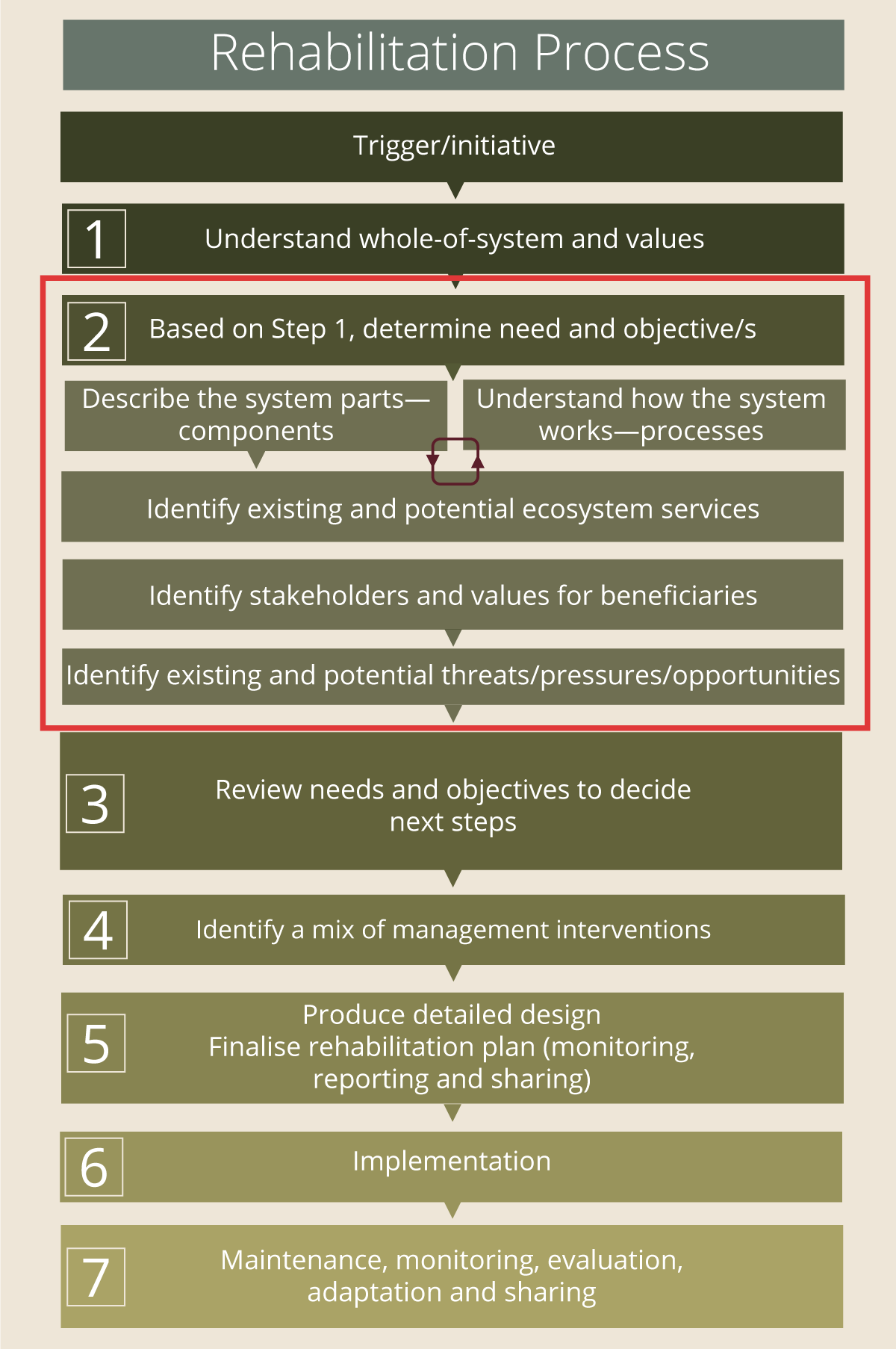|
|
Step 2: Based on Step 1, determine need and objective/sThis step looks at the detail of the proposed rehabilitation site and its immediate surrounding landscape. Site or reach scale rehabilitation should not be undertaken until the site is considered in the context of the broader Whole-of-System, Values-Based Framework (Framework). For example, the accumulation of sand at a site is a threat, and the infilling of pools by sand may act as a trigger for action. The sand is reducing the habitat for fish and invertebrate, which in turn is affecting the existence values and the availability of fish for fishers (service). However, the sand may have been mobilised by catchment clearance upstream that occurred decades earlier and has slowly migrated down the river. Knowing this information can aid in understanding the trajectory of the system and the site, guiding the appropriate interventions to take. Quick linksAquatic Ecosystem Rehabilitation Mapping Report The needs and objectives for the Aquatic Ecosystem Rehabilitation Plan can be set using the Framework knowledge gathered in Step 1 and based on a detailed assessment of the site. Objectives should be linked to the desired outcomes of the rehabilitation, which may be based on the services or values to be achieved. The clearer the objectives for rehabilitation, the easier it is to identify and implement management interventions.
Setting objectivesDefining objectives of an Aquatic Ecosystem Rehabilitation Plan will ensure that management interventions are relevant and linked to, desired outcomes. There are many standards to defining objectives, including using SMART principles[1] and Structured decision making[3] practices. SMART objectives commonly apply the following principles[1][2]:
The following provides a summary of Step 2:
The information and data required for undertaking this step can be quite extensive. The Information sources for aquatic ecosystem rehabilitation planning provides useful links to key information sources.
Things to think about
More informationWhole-of-System, Values-Based Framework See a table listing Information sources for aquatic ecosystem rehabilitation planning See the next step, Step 3: Review need and objectives Pages under this sectionReferences
Last updated: 13 June 2022 This page should be cited as: Department of Environment, Science and Innovation, Queensland (2022) Step 2: Based on Step 1, determine need and objective/s, WetlandInfo website, accessed 25 June 2024. Available at: https://wetlandinfo.des.qld.gov.au/wetlands/management/rehabilitation/rehab-process/step-2/ |

 — Department of Environment, Science and Innovation
— Department of Environment, Science and Innovation


